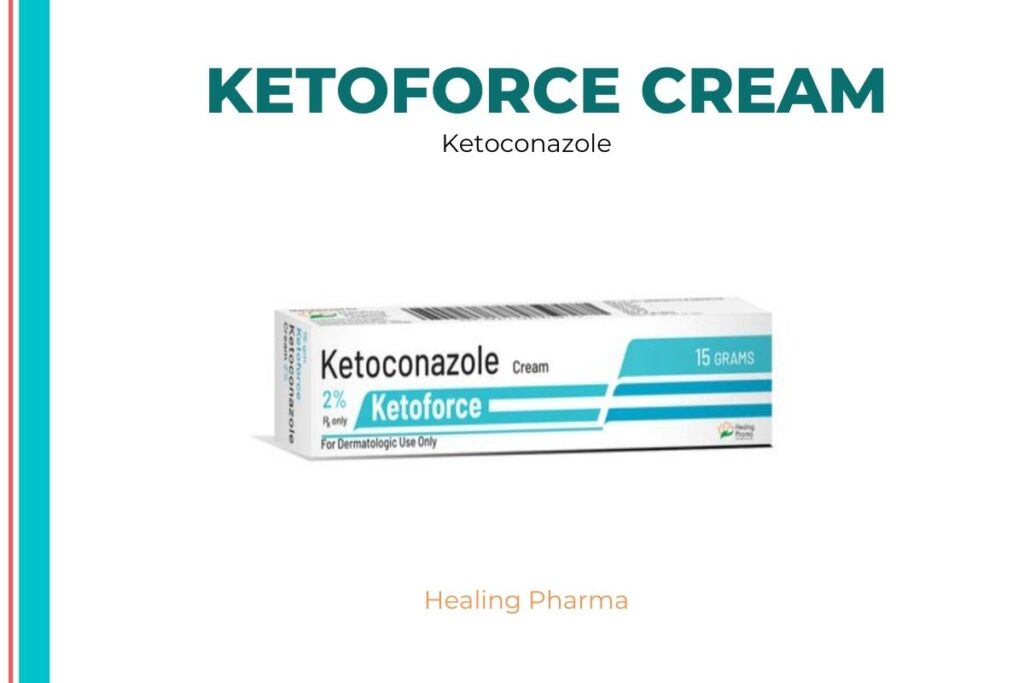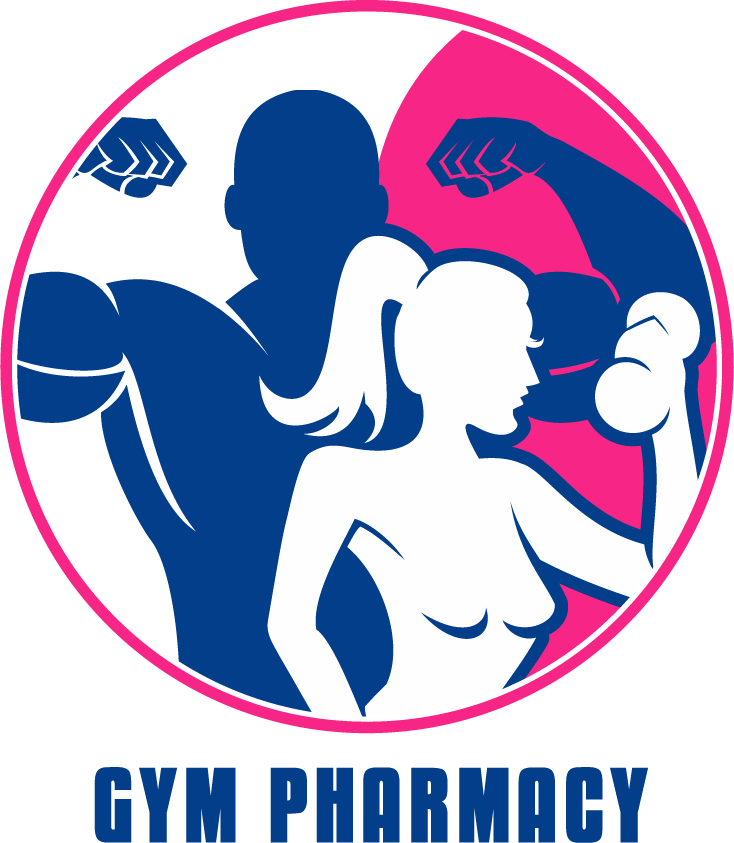Ketoforce Cream
Ketoforce Cream is an antifungal medicine that is used to treat fungal skin infections such as ringworm, jock itch, athlete’s foot, seborrheic dermatitis (dry, flaky skin on the face, scalp, chest, upper back, or ears), and pityriasis (a type of skin rash that causes scaly, discolored patches on chest, back, legs and arms).
Ketoforce Cream fights fungus and yeast by generating holes in their cell membranes. The topical and oral dose forms of Ketoforce Cream are both available. The topical version of Ketoforce Cream can be applied as a thin layer to the clean and dry afflicted region with the finger. Ketoforce Cream should not come into contact with your nose, mouth, or eyes. If Ketoforce Cream comes into touch with these areas by accident, thoroughly rinse with water.
Nausea, headaches, diarrhea, stomach pain, and abnormal liver function test findings are all common adverse effects. Some people who use Ketoforce Cream topically may develop dry skin, itching, redness, or a burning feeling. The majority of these Ketoforce Cream adverse effects do not require medical care and will go away over time. Please visit your doctor if the side effects persist or worsen.
Because Ketoforce Cream has the potential to cause liver failure, your doctor will closely monitor your liver function while you’re using it. If you are pregnant or nursing, you should get medical advice before using Ketoforce Cream. If you’re using Ketoforce Cream topically, stay away from bare flames and avoid smoking. Ketoforce Cream readily catches fire and burns. Before using Ketoforce Cream, tell your doctor if you are using any steroidal cream, lotion, or ointment so that the amount can be changed. People with liver disease, asthma, sulphite allergy, an autoimmune issue, or cardiac difficulties (with prolonged QT wave of heartbeat) should not use Ketoforce Cream. Consult your doctor before using Ketoforce Cream.
Fungal infections are treated with Ketoforce Cream.

Medicinal Advantages
Ketoforce Cream is a topical antifungal that is used to treat ringworm, jock itch, and athlete’s foot, as well as seborrheic dermatitis (dry, flaky skin on the face, scalp, chest, upper back, or ears) and pityriasis (a type of skin rash that causes scaly, discoloured patches on chest, back, legs and arms). The oral form of Ketoforce Cream is used to treat fungal infections and Cushing’s syndrome (excessive levels of cortisol hormone). The membranes of fungal cells are critical for their survival because they prevent undesired substances from entering the cells and stop the leakage of cell contents. Ketoforce Cream fights fungus by causing holes in their cell membranes. As a result, the fungal infection is cleared, and the cracking, burning, scaling, and itching of the skin caused by infections are relieved.
Use Instructions
On the skin (cream/gel): The affected area of skin should be washed and dried. Using your finger, gently rub a small amount of Ketoforce Cream on the clean and dry afflicted region and surrounding skin. Ketoforce Cream should only be used on the outside of the body. Ketoforce Cream should not come into contact with your nose, mouth, or eyes. If Ketoforce Cream comes into touch with these areas by accident, thoroughly rinse with water. If your hands are not the affected area, wash your hands before and after using Ketoforce Cream to prevent infection. Shampoo: Only use Ketoforce Cream in shampoo form if your doctor has prescribed it. Use Ketoforce Cream to wash your hair and leave it on for 3 to 5 minutes. After that, give it a thorough rinse. If you’re taking Ketoforce Cream by mouth, drink the entire tablet with a glass of water. To avoid stomach upset, take Ketoforce Cream with food. It should not be broken, crushed, or chewed.
Store in a cool, dry location away from direct sunlight.
Ketoforce Cream Side Effects
Ketoforce Cream, like all drugs, might cause side effects such as dry skin, itching, redness, or a burning feeling on the skin. The majority of these Ketoforce Cream adverse effects do not require medical care and will go away over time. Please visit your doctor if the side effects persist or worsen.
Drug Recommendations
Topical Ketoconazole should not be applied to the nose, mouth, or eyes since it can cause irritation. If Ketoconazole comes into touch with these locations by accident, thoroughly rinse with water. Ketoconazole should not be used if you are pregnant, planning to become pregnant, or are a breastfeeding mother. If you’re using Ketoconazole topically, stay away from bare flames and avoid smoking. Ketoconazole catches fire and burns quickly. If you have asthma, a sulpha medication allergy, an autoimmune illness, heart, or liver problems, tell your doctor before using ketoconazole. Ketoconazole can destroy your liver to the point where you’ll need a liver transplant or even die. Ketoconazole should not be used to treat fingernail/toenail fungal infections, prostate cancer, or Cushing’s syndrome. Avoid direct sunlight exposure while taking ketoconazole because it may make your skin more sensitive to the sun and produce sunburn more quickly. When going outside, use a high-SPF sunscreen (SPF 30 or above).
Interactions Between Drugs
Ketoconazole may interact with medications that treat heartburn and acidity (omeprazole), immunosuppressants (cyclosporin), glucocorticoids (fluticasone, hydrocortisone), antifungals (fluconazole), antidepressants (escitalopram), blood cholesterol-lowering medicines (atorvastatin), bronchodilators (albuterol), blood thinners (warfarin), laxatives (polyethylene glycol 3 (alprazolam).
Ketoconazole may interact with caffeine-containing tea, coffee, cola, and energy beverages, thereby intensifying the negative effects of caffeine. Ketoconazole should not be taken with marijuana since it may exacerbate the negative effects of marijuana. Additionally, avoid drinking alcohol while taking Ketoconazole because it may raise the risk of liver damage.
Drug-Disease Interaction: Before taking Ketoconazole, tell your doctor if you have asthma, a sulphite allergy, an immunological illness, or heart or liver problems.
Safety Suggestions
ALCOHOL
While using Ketoconazole, avoid drinking alcohol because it might cause liver damage and other side effects.
PREGNANCY
Ketoconazole is a Category C pregnancy medicine that should only be administered to a pregnant woman if the benefits outweigh the dangers.
BREAST FEEDING
If you are breastfeeding your child, ketoconazole can pass into breast milk and produce negative effects in the baby, so talk to your doctor.
DRIVING
Ketoconazole, when given orally, might produce dizziness or drowsiness. As a result, only drive if you are alert after taking Ketoconazole.
LIVER
Please visit a doctor if you have any concerns about the usage of ketoconazole in people with liver disorders.
KIDNEY
If recommended by a doctor, ketoconazole is safe for patients with kidney problems.
No habit formation
Advice on Diet and Lifestyle
Change your socks and wash your feet on a regular basis. Shoes that make your feet sweaty and heated should be avoided.
To avoid fungal infections, avoid walking barefoot in moist areas like locker rooms and gym showers.
Scratching the infected area of skin can transfer the infection to other parts of the body.
Towels, combs, bedsheets, shoes, and socks should not be shared with others.
Your bed linens and towels should be washed on a regular basis.
Ketoconazole (oral form) should not be taken with foods that include chocolate or caffeine, such as cocoa beans, tea, coffee, cola, or energy drinks, as this may exacerbate the caffeine’s negative effects.
When using Ketoconazole (oral form), avoid drinking alcohol because it can produce side effects and raise the risk of liver damage.
Recommendations
Clean and dry the afflicted area before applying Ketoconazole.
Ketoconazole should not come into contact with your nose, mouth, or eyes. If Ketoconazole comes into touch with these locations by accident, thoroughly rinse with water.
After applying Ketoconazole, wait at least 3 hours before washing the treated areas.
Other details: This item is non-refundable.
Concerns of Patients
A fungus affects the tissue and causes infection, resulting in a fungal infection. It’s possible that fungal diseases are infectious (spread from one person to another). Ringworm is a contagious fungal illness of the skin or scalp that forms a rash that looks like a worm in a ring shape. Jock itch (also known as tinea cruris) is a fungus that creates an itchy, red rash in warm, moist parts of the body like the groin, buttocks, and inner thighs. Athlete’s foot (also known as tinea pedis) is a fungal illness that commonly begins between the toes, especially in those who sweat a lot and wear tight shoes. Athletes are the ones who get it the most. Itchy, burning, or stinging sensations are caused by a scaly rash. Seborrheic dermatitis is a skin ailment that causes an itchy rash with dry, flaky scales on the skin of the scalp, face, back, and upper chest, which contains oil glands.
FAQs
Fungal infection is a contagious skin ailment that spreads from person to person via direct skin-to-skin contact, contaminated soil or surfaces, and sick animals. As a result, it is advised to avoid close direct contact with the sick individual until the virus has cleared, as this can transmit the infection.
While using Ketoconazole in oral form (tablets), you should avoid meals containing chocolate and caffeine, such as cocoa beans, tea, coffee, cola, and energy drinks, since this may exacerbate the negative effects of caffeine, such as drowsiness, restlessness, or nausea.
Ketoconazole contains stearyl alcohol and cetyl alcohol, which can induce skin responses including contact dermatitis (a red, itchy rash caused by direct touch with a chemical). If the irritation intensifies or does not go away, please see a doctor.
After applying Ketoconazole for at least 20 minutes, you should apply makeup or sunscreen to the treated region of skin.
Ketoconazole should be used for as long as your doctor has prescribed it. Please visit a doctor if the illness worsens or persists after 2 to 4 weeks of Ketoconazole medication.
It is not suggested that you discontinue taking Ketoconazole without first visiting your doctor, since this could result in a recurrence of infection. As a result, take Ketoconazole for as long as your doctor has given it, and contact your doctor if you have any problems while taking it.
Ketoconazole can cause serious liver damage and heart difficulties, such as life-threatening heart rate or heart rhythm disorders, if taken for an extended period of time. If you have any type of heart or liver condition, talk to your doctor before using Ketoconazole.







Leave a Reply
You must be logged in to post a comment.